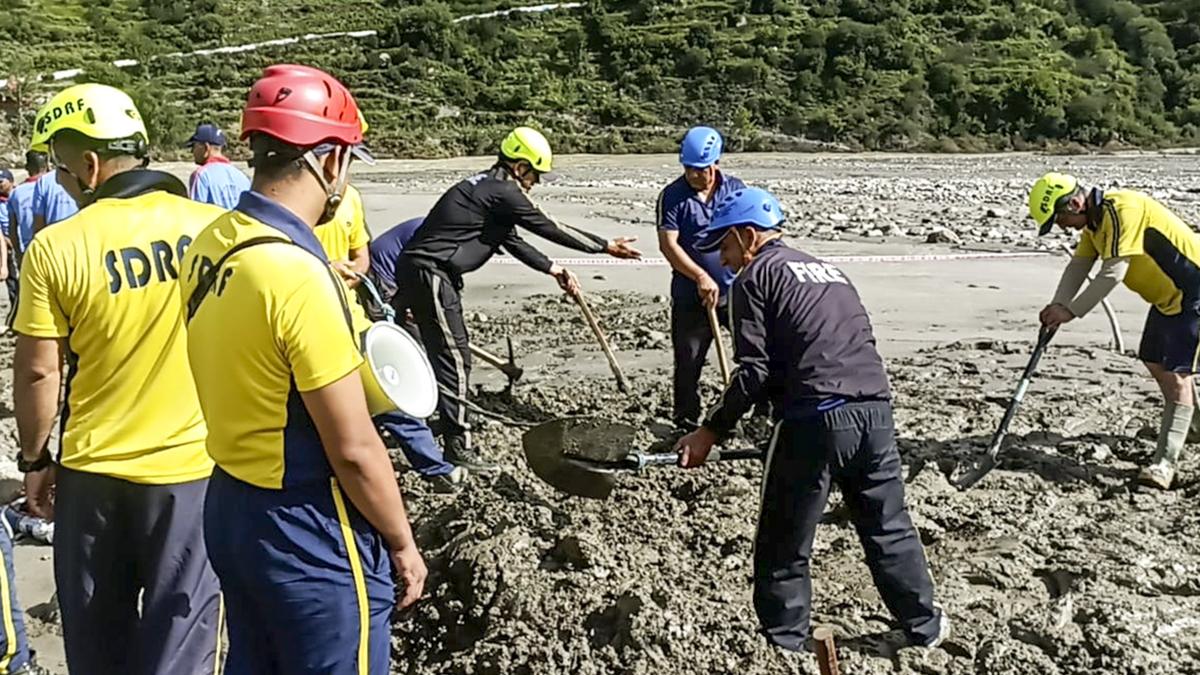Now Reading: Uttarkashi Flash Floods: Search Underway for 66 Missing in Dharali
-
01
Uttarkashi Flash Floods: Search Underway for 66 Missing in Dharali
Uttarkashi Flash Floods: Search Underway for 66 Missing in Dharali

Speedy summary
- Disaster Overview: Dharali village in Uttarkashi witnessed devastating flash floods and mudslides on August 5, 2025, leading to the disappearance of 66 people, including 24 nepali laborers. Heavy rains continue to hamper rescue operations.
- Rescue Efforts: Ground Penetrating Radars (GPRs) from the National Geophysical Research Institute (NGRI) are being deployed. The Indian Army, NDRF, SDRF teams with dogs and helicopters are engaged in round-the-clock rescue efforts. Four choppers have been deployed for evacuations despite adverse weather conditions.
- Relief Operations: Over 1,300 individuals have been airlifted; relief supplies such as food grains, clothing, and sleeping bags are being distributed adequately. Authorities restored mobile networks and a vital Bailey bridge for connectivity.
- Casualties & Missing Persons: Akash Panwar’s body was recovered recently; nine army personnel among others remain missing. An ex-gratia of ₹5 lakh is being distributed to victims’ families as immediate relief.
- Judicial Oversight: Uttarakhand High Court has directed a specialized team of doctors and advocates under NALSA guidelines to prepare reports on disaster response quality for affected communities.
- Weather Prediction & Challenges: Meteorological Department forecasts continued heavy rainfall till mid-August. Helicopter rescues face delays due to incessant rain.
Images:
- !1200/20250811269L.jpg”>SDRF near temporary Bhagirathi lake
- !click here.
Indian Opinion Analysis
The ongoing flash floods in Uttarkashi highlight the fragility of hill regions during monsoon extremes exacerbated by climate change and human activity such as unregulated construction near ecologically sensitive areas like riverbanks.
The deployment of advanced tools like GPRs is commendable in saving lives during disasters but also indicates an urgent need for preemptive measures rather than reactive responses once tragedies occur-especially given similar incidents recurring annually across Uttarakhand.While ₹5 lakh ex-gratia payments aim toward immediate alleviation for victims’ families, enduring solutions should focus on resilient infrastructure tied closely with ecological considerations-such as flood-resistant habitats or early warning systems integrated into community setups.
The involvement of judicial mechanisms adds critical oversight into relief distribution efficiency while signaling systemic accountability post-disasters-a potentially helpful precedent if replicated elsewhere within India’s policy framework.
India’s reliance must shift toward long-term national preparedness powered by local adaptation strategies aligning state resources better with dynamic risks posed by erratic weather patterns prevalent today amidst global warming pressures intensifying Himalayan vulnerabilities further annually (suggesting reviewing current practices thoroughly).






















